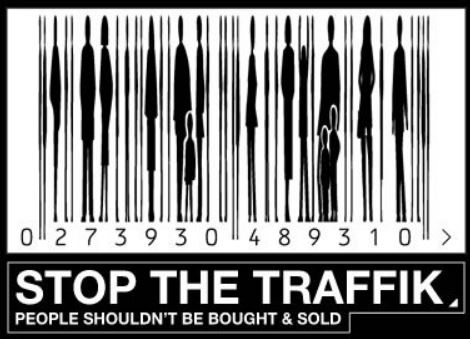AI
Using Data and Analytics to Combat Human Trafficking
October 18, 2018 | Written by: Bill Peace
Categorized: AI | Citizen IBM | IBM Cloud
Share this post:
After serving as Deputy Director of Intelligence for the UK Serious Organised Crime Agency – similar to the U.S. Federal Bureau of Investigation – I found that “retiring” really wasn’t an option for me. I couldn’t walk away from the fight against human trafficking and other forms of modern slavery. It’s just too important. And it’s why I became an advisor to STOP THE TRAFFIK (STT), a coalition which aims to bring an end to human trafficking worldwide.
 Human trafficking victimizes an estimated 40.3 million people worldwide, according to a 2017 study by the International Labor Organization. Most of the victims are women and children. In the U.S. alone, nearly one million people are trafficked across the borders each year, according to State Department reports. Eighty percent of those victims are female, and 50 percent are children. And it’s all happening right under our noses.
Human trafficking victimizes an estimated 40.3 million people worldwide, according to a 2017 study by the International Labor Organization. Most of the victims are women and children. In the U.S. alone, nearly one million people are trafficked across the borders each year, according to State Department reports. Eighty percent of those victims are female, and 50 percent are children. And it’s all happening right under our noses.
This ruthless exploitation of our fellow humans drives a $150 billion-per-year criminal industry – in the same league with drug trafficking and major financial crimes. Yet systematic, organized resistance to human trafficking only began about 10 years ago as public- and private-sector leaders came to recognize the pervasiveness of the activity, the enormity of its illicit profits, and the breadth and depth of misery and despair caused by modern slavery.
Almost universally, human trafficking victims are forced into agricultural, domestic and industrial labor; prostitution; and other forms of exploitation from which there is little chance for escape. In response, law enforcement, NGOs and financial institutions have engaged in a three-part protocol to help detect and thwart these crimes:
- NGOs partner with communities to disrupt trafficking activity by enabling better community resilience and supporting victims
- Law enforcement targets the criminal traffickers themselves
- Financial institutions identify and track the flow of monies related to trafficking
Of these three approaches to shutting down global trafficking, helping banks “follow the money” is where IBM’s expertise and technology is making a major impact. The banking and finance sectors have worked within the global system of regulation for anti-money laundering over the last 25 years. And although it is undoubtedly harder now for criminals to hide their money, those funds still can be intermingled with those from legitimate business activities. A critically important way to identify and expose these activities is to facilitate more effective sharing of information.
To that end, IBM worked with STT to develop a new, IBM Cloud-hosted data hub that enables institutions such as Barclays, Europol, Liberty Global, Lloyd’s Banking Group, University College London, Western Union and others to provide its analysts with enhanced information to help combat human trafficking. Using AI (augmented intelligence) and machine learning, the tool is trained to recognize and detect specific human trafficking terms and incidents. AI also enables the hub to ingest open-source data at scale – including thousands of daily news feeds – to help analysts identify the characteristics of human trafficking incidents (such as recruitment and transportation methods) more easily.
Only authenticated partners have access to the secure data hub, to which they can upload non-personal data related to human trafficking. The tool then uses AI to aggregate and interpret the data – transforming it into actionable information for use by governments, NGOs and financial institutions. By analyzing unstructured data and sharing the results, the IBM/STT platform facilitates better cross-sector collaboration to shut down human trafficking.
Finally, the data hub’s unique shared governance model means all partners will own an equal stake and retain control over their data. And by effectively sharing data with everyone in the global anti-trafficking community, we are multiplying our ability to achieve our eventual goal – the end of human trafficking for good.

Head of Traffic Analysis Hub, STOP THE TRAFFIK
It’s a Long and Open Road Ahead for Bus & Coach Travel
As one of the oldest forms of public transport, the bus occupies a special place in our hearts and lives. For more than a century, these vehicles have carried us to work, school, holiday destinations and festivals. But bus and coach companies can hardly afford to be sentimental nowadays. Technological innovations are creating new models […]
How a Hybrid Multicloud Strategy Can Overcome the Cloud Paradox
Public clouds have a lot to offer. Public clouds bring about agility, elasticity, and speed, which make a company’s IT shop become a lot more responsive to the needs of its business. By shifting workloads to the cloud, businesses can make great strides in reducing costs and boosting productivity. This allows them to focus on […]
Q&A with Hillery Hunter, VP & CTO IBM Cloud on IBM’s Software Transformation
A couple of weeks after having closed its landmark acquisition of Red Hat, IBM is announcing new cloud capabilities that will transform the way clients do business and accelerate their journey to the cloud. This includes: IBM Cloud Paks, Red Hat OpenShift on IBM Cloud, Red Hat OpenShift on IBM Z and LinuxOne, and Consulting […]


